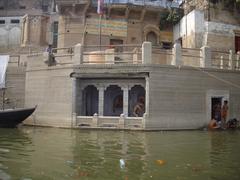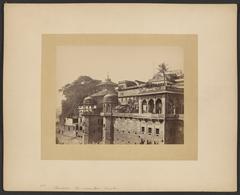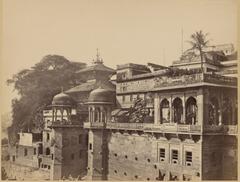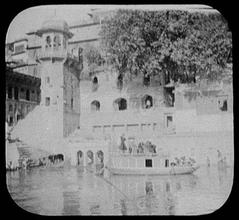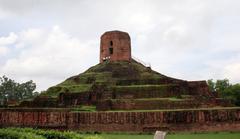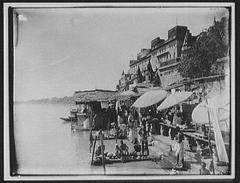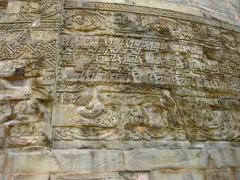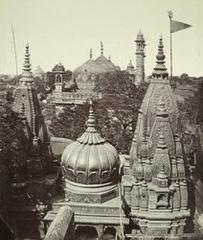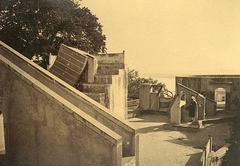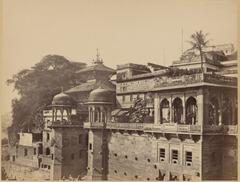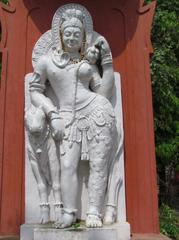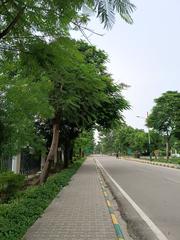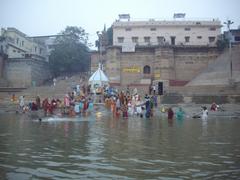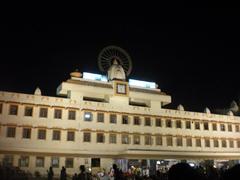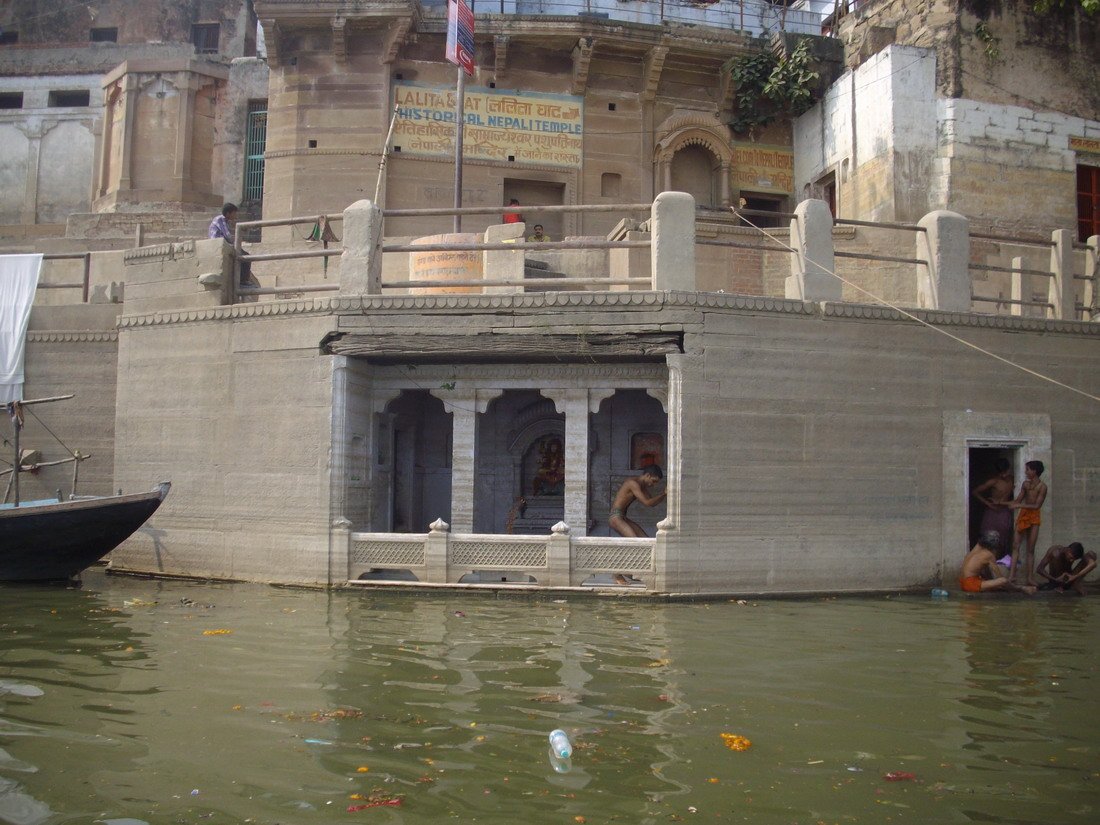
Lalita Ghat Varanasi: Visiting Hours, Tickets, and Travel Guide
Date: 14/06/2025
Introduction: The Spiritual and Cultural Essence of Lalita Ghat
Lalita Ghat, nestled along the revered Ganges River in Varanasi, stands as a vibrant testament to the city’s ancient spiritual traditions, architectural grandeur, and living heritage. Named after Goddess Lalita, this ghat is a focal point of religious activity, drawing pilgrims, history lovers, and travelers alike. Here, daily rituals unfold against a backdrop of centuries-old temples, intricate shrines, and monastic institutions, all reflecting the enduring significance of Varanasi as one of the oldest continuously inhabited cities in the world. Open 24 hours a day with no entry fee, Lalita Ghat is accessible to all and serves as a gateway to exploring the heart of Banaras’ sacred landscape.
For additional resources and planning, refer to Banaras Diary, The Varanasi Heritage Dossier, and the Varanasi Tourism Official Site.
Table of Contents
- Introduction
- Historical Background and Significance
- Visitor Information
- Religious and Cultural Practices
- Conservation and Community Stewardship
- Frequently Asked Questions (FAQ)
- Visuals and Media
- Further Reading and Sources
- Conclusion and Travel Tips
Historical Background and Significance
Origin and Evolution
Lalita Ghat is named after Goddess Lalita, a prominent deity in the Shakta tradition. The ghat’s coordinates (25º 18.547’ N, 83º 00.815’ E) mark its position along Varanasi’s stretch of the Ganges (The Varanasi Heritage Dossier). Historically, the area comprised three separate ghats—Nepali Ghat, Lalita Ghat, and Rajarajeshvari Ghat—which, over time, merged into what is now known as Lalita Ghat. In the 19th century, the King of Nepal unified Nepali and Lalita Ghats by constructing the Nepali Mandir and stone steps; Rajarajeshvari Ghat was built earlier by Babu Keshava Das. The southern section was restored in 1965 by the Uttar Pradesh government to maintain its religious significance and civic utility.
Temples and Monastic Institutions
Lalita Ghat is renowned for its sacred structures:
- Nepali Mandir (Kathwala Temple): Erected by the King of Nepal in the 19th century, this Shiva temple features a pagoda-style architecture and intricate Nepalese wood carvings, reminiscent of Kathmandu’s Pashupatinath Temple. The termite-resistant wooden and stone construction exemplifies a fusion of Nepalese and North Indian styles (Banaras Diary).
- Lalita Devi Temple: This temple, dedicated to Goddess Lalita, is a spiritual center for worshipers seeking blessings and peace, especially during festivals when it hosts elaborate rituals (Banaras Diary).
- Other Shrines: Smaller shrines honor deities like Shiva, Vishnu, and local river goddesses. Ancient imagery and relics from the 12th century are housed in these sanctuaries, with many structures built or restored during the 18th and 19th centuries.
- Monastic Institutions: Rajarajeshvari Math, Siddhagiri Math, and Umaraogiri Math are notable for blending lay and ascetic traditions, with Siddhagiri Math linked to the Shaiva Paramahamsa Sampradaya.
- Moksha Bhavan: Established in 1922, this hospice provides a place for the terminally ill to seek spiritual liberation, reflecting Varanasi’s deep connection to the quest for moksha.
Visitor Information
Visiting Hours
- Open: 24 hours a day, year-round
- Best times: Early morning (5:00–8:00 AM) and evening (5:00–9:00 PM) for rituals, spiritual ambiance, and safety
Entry and Tickets
- Entry Fee: None. The ghat and temples are open to all visitors.
- Donations: Voluntary contributions are appreciated at temples and during rituals.
- Guided Tours: Available locally for a fee; booking through reputable operators is recommended (Thrillophilia).
Accessibility and Travel Tips
- Location: Between Mir Ghat and Bajirao Ghat, close to Manikarnika Ghat and Kashi Vishwanath Temple
- How to Reach:
- On Foot: Best accessed through the narrow alleys of old Varanasi from Godowlia Chowk (10–15 minute walk)
- By Boat: Offers a scenic approach and panoramic views (Krazy Butterfly)
- By Rickshaw: Up to the closest accessible point; then walk
- Mobility: Steep and uneven steps; not wheelchair accessible. Those with limited mobility may prefer viewing from a boat.
- Dress Code: Modest attire is expected—shoulders and knees covered; remove shoes before entering temples.
- Facilities: Public toilets (basic), small shops, eateries, and drinking water available nearby.
Facilities
- Restrooms: Public toilets are available but basic; bring personal hygiene supplies.
- Shops & Food: Vendors offer snacks, tea, and religious items—try local specialties like kachaudi sabzi, jalebi, and lassi (Krazy Butterfly).
- Photography: Permitted, but seek consent before photographing individuals, especially during rituals. Photography is strictly prohibited during cremations and inside certain temple areas.
Nearby Attractions
- Manikarnika Ghat: The main cremation ghat, adjacent to Lalita Ghat
- Kashi Vishwanath Temple: A major Shiva shrine within walking distance
- Scindia Ghat: Known for its partially submerged Shiva temple
- Man Mandir Ghat: Features an astronomical observatory and palace
- Dashashwamedh Ghat: Site of the grand Ganga Aarti (Tourinplanet)
- Sarnath: A significant Buddhist site about 10 km from the city
Special Events and Festivals
- Ganga Dussehra, Kartik Purnima, Maha Shivaratri, Dev Deepawali: These festivals bring vibrant processions, mass ritual bathing, and the spectacular lighting of diyas (oil lamps) along the ghat’s steps (Optima Travels).
Religious and Cultural Practices
Lalita Devi Worship
The temple of Lalita Devi is a revered site for daily pujas, attracting devotees seeking blessings from the Divine Mother. Special ceremonies and offerings mark major Hindu festivals.
Ritual Immersions and Ceremonies
Bathing in the Ganges at Lalita Ghat is considered highly auspicious, believed to purify the soul. Ritual offerings of flowers, lamps, and prayers are a daily occurrence. During the monsoon, the Ganga shrine is submerged, symbolizing the sacred union of the river and the divine.
Role in Pilgrimage Circuits
Lalita Ghat is a key stop in the Panchakroshi Yatra and other pilgrimage routes, reflecting its integration into Varanasi’s ancient devotional traditions.
Moksha Bhavan
This hospice offers a compassionate sanctuary for individuals seeking moksha, underscoring Varanasi’s association with spiritual liberation and the cycle of life and death.
Conservation and Community Stewardship
- Ownership: The temple compound is managed by a local trust; the Municipal Corporation oversees the ghat area.
- Preservation Efforts: Restoration projects focus on maintaining the Nepali Mandir’s wood carvings and preserving stone steps. No dedicated government plan exists, but community engagement and Varanasi’s Master Plan provide hope for future conservation (Culture and Heritage).
- Modern Amenities: Recent improvements include seating, signage, and lighting—enhancing visitor experience while respecting traditional aesthetics.
Frequently Asked Questions (FAQ)
Q: What are Lalita Ghat’s visiting hours?
A: Open 24 hours; best visited at dawn or dusk.
Q: Is there an entry fee or ticket required?
A: No, access is free.
Q: Are guided tours available?
A: Yes, local guides offer tours exploring history, architecture, and rituals.
Q: Is Lalita Ghat accessible for people with disabilities?
A: Accessibility is limited due to steps; boats offer an alternative perspective.
Q: Can I take photos at Lalita Ghat?
A: Yes, but ask permission before photographing people or rituals; photography is prohibited during cremations and inside some temples.
Visuals and Media
For a more immersive experience, explore virtual tours and galleries online featuring:
- “Lalita Ghat stone steps at dawn”
- “Nepali Mandir at Lalita Ghat”
- “Devotees performing puja on the Ganges”
- “Aarti ceremony at Lalita Ghat”
Further Reading and Sources
- The Varanasi Heritage Dossier: Lalita Ghat and Temples
- Banaras Diary
- Thrillophilia’s Varanasi Guide
- Optima Travels
- Culture and Heritage
- Varanasi Tourism Official Site
- Krazy Butterfly
- Tour My India
- Wanderlog
- Tourinplanet
Conclusion and Travel Tips
Lalita Ghat offers an unparalleled blend of spiritual depth, historical richness, and cultural vibrancy in the heart of Varanasi. Open around the clock and free to access, it welcomes pilgrims, tourists, and culture seekers to experience daily rituals, festivals, and the serene beauty of the Ganges. To enhance your journey:
- Visit at sunrise or sunset for a peaceful and evocative experience.
- Respect local customs—dress modestly, remove shoes in temples, and seek permission for photography.
- Support preservation through donations or responsible tourism practices.
- Explore nearby landmarks and consider guided tours for deeper insights.
- Download the Audiala app for curated guides and real-time updates.
Lalita Ghat truly captures the living spirit of Varanasi—where every step connects you to centuries of devotion, artistry, and community.
Sources and Further Reading
